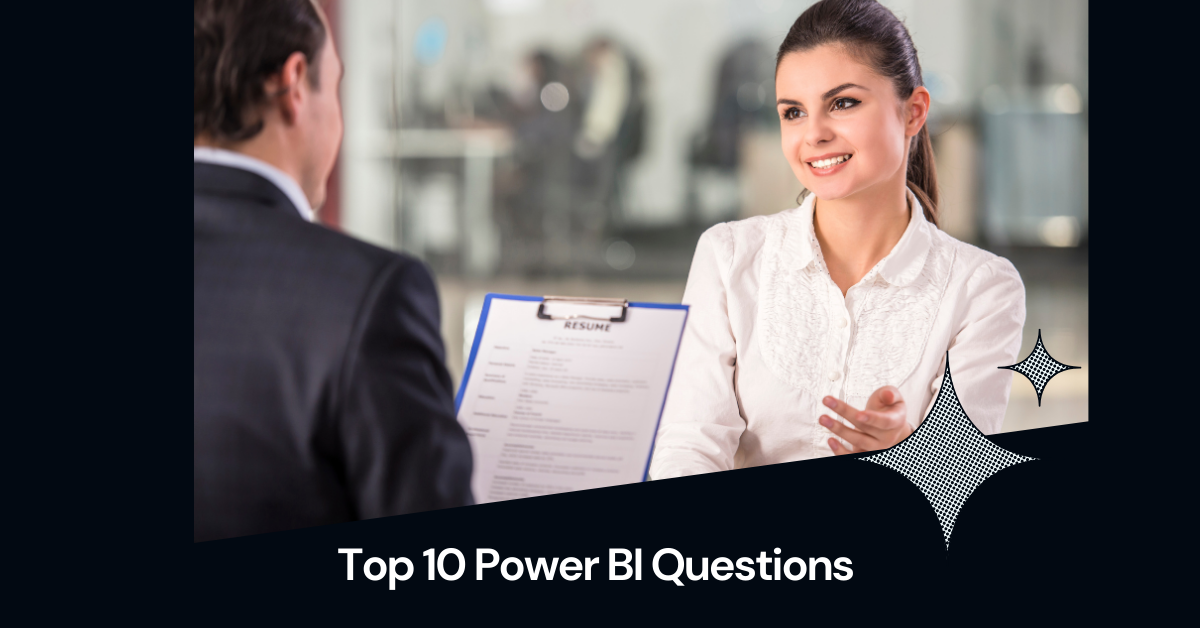
Top 10 Advanced Power BI Interview Questions to Ace Your Next Job Interview
#1 Myinstitutes.com is one of the best educational portals and training institutes in MYSORE, MANGALORE, and BANGALORE.
Top 10 Advanced Power BI Interview Questions to Ace Your Next Job Interview
In today’s data-driven world, Power BI has emerged as a powerful business intelligence tool that enables organizations to transform raw data into meaningful insights. Whether you’re an experienced Power BI developer or an aspiring data analyst, acing an advanced-level Power BI interview requires a deep understanding of its features, data modeling techniques, DAX functions, and performance optimization strategies.
To help you prepare, we’ve compiled the top 10 advanced Power BI interview questions, along with in-depth explanations that will set you apart from the competition.
1. What is the Difference Between a Calculated Column and a Measure in Power BI?
This is one of the most frequently asked questions in Power BI interviews, as it tests your understanding of data modeling concepts.
Answer:
A calculated column is created at the row level of a table using DAX expressions and is stored as part of the dataset. It is computed when data is loaded or refreshed. These columns increase data model size and should be used only when necessary.
A measure, on the other hand, is a dynamic calculation performed on aggregated data. Measures are computed on the fly based on the filter context of a report and do not increase storage size.
Example:
DAXCopyEdit-- Calculated Column
TotalPrice = Sales[Quantity] * Sales[UnitPrice]
-- Measure
Total Revenue = SUM(Sales[Quantity] * Sales[UnitPrice])
When to Use What?
- Use calculated columns when you need precomputed values at the row level.
- Use measures when you need dynamic calculations based on user interactions.
2. How Do You Optimize a Power BI Report for Better Performance?
Optimizing Power BI reports is crucial for handling large datasets efficiently.
Answer:
To improve Power BI performance, follow these best practices:
- Optimize DAX Queries: Avoid using row-by-row calculations (e.g., SUMX over large datasets). Instead, leverage columnar operations.
- Reduce Data Model Size: Remove unnecessary columns, avoid calculated columns when possible, and use aggregations.
- Use Indexing and Partitioning: When working with DirectQuery mode, ensure your database has indexed tables.
- Use a Star Schema: A star schema improves query performance by reducing relationships between tables.
- Limit Visual Elements: Reduce the number of visuals and avoid high-cardinality slicers.
- Optimize Query Performance: Use query folding in Power Query to push transformations to the database instead of Power BI processing them.
3. What Are the Different Types of Filters in Power BI?
Filtering is an essential aspect of Power BI reporting, allowing users to refine data views.
Answer:
Power BI provides multiple filtering mechanisms:
- Visual-level filters: Apply filters to a specific chart or visual.
- Page-level filters: Affect all visuals on a particular report page.
- Report-level filters: Impact all pages within a report.
- Drillthrough filters: Enable users to navigate from a summary report to a detailed report.
- Cross-filtering & Cross-highlighting: Allow interactive filtering between visuals.
Example Use Case:
If you want to filter a report based on a region, you can use a slicer that dynamically applies the selected filter across visuals.
4. What Is the Difference Between SUM() and SUMX() in DAX?
This question tests your knowledge of DAX functions and their impact on performance.
Answer:
- SUM() simply adds up all the values in a column.
- SUMX() iterates through a table row by row and evaluates an expression before summing the results.
Example:
DAXCopyEdit-- SUM function
TotalSales = SUM(Sales[Amount])
-- SUMX function
TotalSalesX = SUMX(Sales, Sales[Quantity] * Sales[UnitPrice])
SUMX is useful when calculations depend on row-level context.
5. How Do You Implement Row-Level Security (RLS) in Power BI?
Security is a key concern in Power BI, especially when handling sensitive data.
Answer:
Row-Level Security (RLS) in Power BI is implemented using DAX filters and role-based access.
Steps to Implement RLS:
- Create roles in Power BI Desktop under the “Modeling” tab.
- Define DAX filter expressions to restrict data based on user roles.
- Publish the report to Power BI Service and assign users to the defined roles.
Example:
DAXCopyEdit-- RLS filter for restricting data to specific users
[UserEmail] = USERPRINCIPALNAME()
This ensures that users can only view data relevant to their login credentials.
6. What Is the Purpose of the CALCULATE Function in DAX?
Answer:
The CALCULATE() function is one of the most powerful functions in DAX as it allows you to modify filter context dynamically.
Example:
DAXCopyEditSalesLastYear = CALCULATE(SUM(Sales[Amount]), SAMEPERIODLASTYEAR(Calendar[Date]))
This function is widely used in time intelligence and conditional aggregations.
7. How Do You Handle Many-to-Many Relationships in Power BI?
Answer:
Many-to-many relationships occur when both tables contain duplicate values in their linking fields.
Solution Approaches:
- Use a bridge table to create a one-to-many relationship.
- Enable bi-directional cross-filtering in Power BI relationships.
Example:
If multiple sales representatives handle multiple customers, a bridge table linking them ensures proper data filtering.
8. What Is the Difference Between Import Mode and DirectQuery Mode?
Answer:
| Feature | Import Mode | DirectQuery Mode |
|---|---|---|
| Performance | Faster | Slower (depends on database performance) |
| Data Storage | Stored in Power BI | Stored in the source database |
| Real-time Data | No | Yes |
| Ideal For | Small to medium datasets | Large datasets with live updates |
Choosing the right mode depends on the dataset size and refresh requirements.
9. How Do You Create a Dynamic Top N Report in Power BI?
Answer:
To create a Top N report, follow these steps:
- Create a parameter for user selection.
- Use RANKX() in DAX to rank records dynamically.
- Apply the Top N filter to a visual.
Example:
DAXCopyEditTopNCustomers =
VAR TopN = SELECTEDVALUE(TopNParameter[Value])
RETURN
FILTER(ALL(Sales), RANKX(ALL(Sales), Sales[Revenue], , DESC) <= TopN)
10. What Are the Key Differences Between Power BI Desktop and Power BI Service?
| Feature | Power BI Desktop | Power BI Service |
|---|---|---|
| Usage | Report development | Publishing & collaboration |
| Data Transformation | Full Power Query support | Limited |
| Security Features | Local RLS | Cloud-based RLS |
| Data Refresh | Manual | Scheduled |
Final Thoughts
Acing a Power BI interview requires both technical knowledge and practical experience. By mastering these advanced Power BI interview questions, you’ll be better prepared to showcase your expertise and land your dream job.
Want to practice more? Try implementing these concepts in a real-world Power BI project! 🚀
Top 5 IT Software Training in Mangalore
- Myinstitutes
- UrbanPro
- QickXpert Infotech
- Shiksha
- Datamites Global Training Institute



